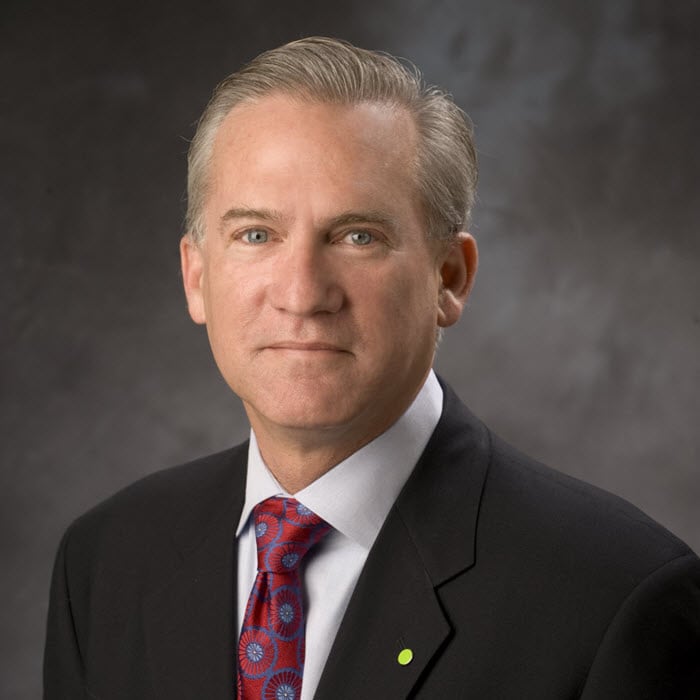
Infrastructure barriers to the elevated future of mobility Are cities ready with the infrastructure needed for urban air transportation?
11 minute read
30 May 2019
Viable electric vertical takeoff and landing (eVTOL) aircraft alone won’t elevate the new mobility ecosystem. Cities and suburbs will need infrastructure on the ground and over the airwaves: landing sites, aircraft traffic management systems, and more.
Introduction: What’s keeping flying cars grounded?
Our previous article, Elevating the future of mobility, identified several challenges to urban air mobility taking flight.1 One of the key factors is infrastructure: the technology and physical assets necessary to enable the scaled adoption of piloted and fully autonomous electric and hybrid electric vertical takeoff and landing (eVTOL) aircraft for either people or cargo transportation.2 Manufacturers have made progress on the aircraft themselves, but the infrastructure necessary to support and enable scaled people and cargo transportation in urban and suburban areas is not yet in place. For the elevated future of mobility to become a reality, players need to establish ground infrastructure, a robust communication and unmanned air traffic management (UTM) system, and a seamless mobility-as-a-service (MaaS) platform. This article aims to explore what needs to happen—on the ground and over the airwaves—to enable a future that includes eVTOLs.
Learn more
Psychological barriers to the elevated future of mobility
Technological barriers to the elevated future of mobility
Explore the Future of mobility collection
Urban air mobility (UAM) looks to improve our daily lives by decreasing the time and cost of moving people and cargo in and around cities. For governments and industry to offer effective solutions, leaders must develop a consensus concept of operations (ConOps), with specific local implementations tailored for particular locations—for example, urban versus suburban. Only then can an effective transportation experience for people and shippers be efficiently and safely deployed. While there are a number of infrastructure elements necessary for an effective UAM system, this article will focus on three: ground infrastructure, UTM and communications, and MaaS platform.
The biggest hurdle: Designing and implementing the required ground infrastructure
Today, industry players are conceptualizing designs for ground infrastructure fit for residential buildings, highway plazas, parking areas, and rooftops of high-rise buildings. Following the US Federal Aviation Administration and European Union Aviation Safety Agency’s standards for heliport design,3 Uber and other companies have designed vertiports to support different eVTOL aircraft sizes and operational volumes.4
Ground infrastructure will require a comprehensive assessment and design integrated with the conditions of a particular city. Companies will need to fulfill the requirements of an integrated UAM ConOps and be compliant with regulations across the planning, designing, and operational phases. Prior to the construction of a vertiport, operators would have to ensure they meet all of the requirements for safe, robust, and scalable operations.5 Furthermore, resolving issues related to certification (vertiports and crews) as well as surveillance and security will be essential to implementing UAM.
Given both limited urban space and sky-high real estate prices, acquiring spaces large enough to build multiple landing areas is often not feasible. Hence, it’s important to consider different landing-pad configurations, depending on pre-existing availability, space utilization, functionality requirements, and location. We can put ground infrastructure—or “vertiplaces”—for both people and cargo in three broad categories: vertihubs, vertiports, and vertistations (see figure 1).
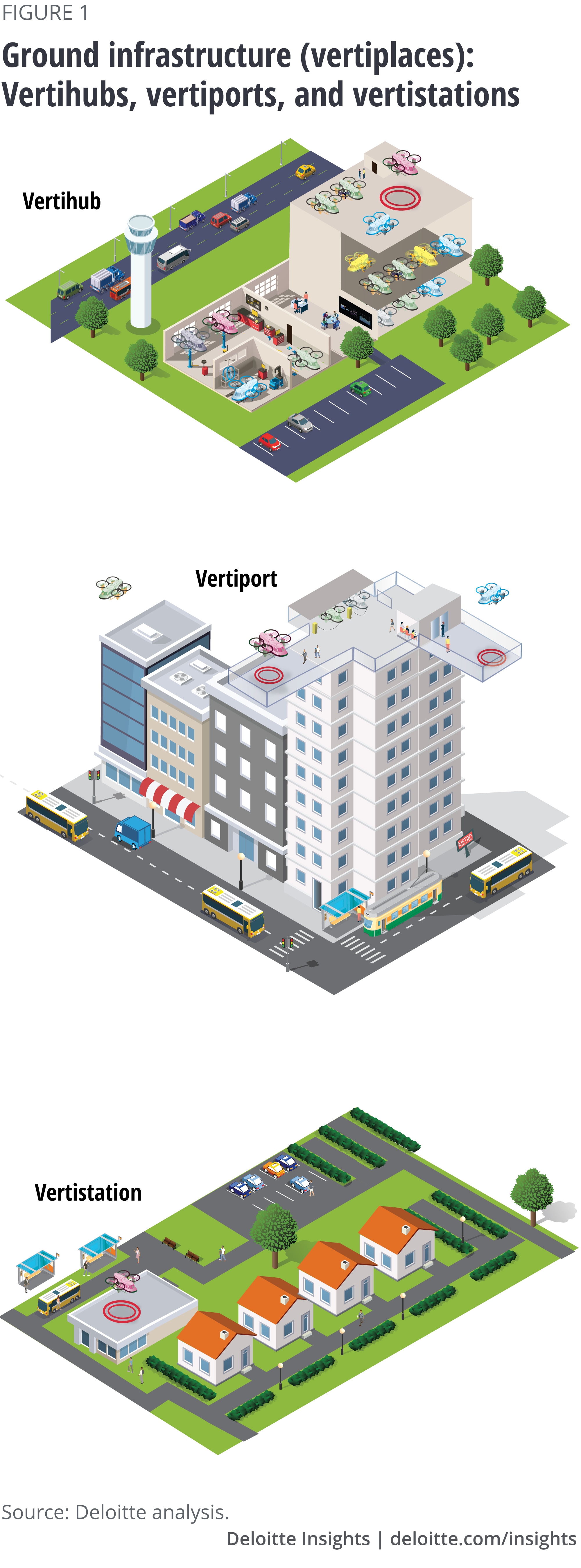
Vertihubs. Akin to small airports for eVTOLs, vertihubs—located on the periphery of urban or suburban areas—would likely be the biggest UAM ground infrastructure. In addition to being a pickup and drop-off site for people and cargo, a vertihub could serve as a central site for eVTOLs flying in a specific geographical area, with at least one vertihub in each city. Operators would need to outfit vertihubs with infrastructure for maintenance, repair, and overhaul (MRO) operations for the fleet, parking spaces for longer-haul eVTOLs, and a centralized citywide operations control system. Vertihubs could be designed to meet fleet service requirements—and for resilience, to ensure continuity of operations could be maintained during an unplanned disruption. Considerations would have to be made beyond fleet operations, such as providing office space for staffers as well as training and accommodations for pilots and service engineers.
Vertiports. Ideally, these takeoff and landing pads would be constructed and/or placed in the heart of a city and serve as major sites for both cargo and passenger on-boarding and off-boarding and takeoffs and landings. As such, operators would need to place them in and around primary destinations such as central business districts, shopping centers, and other transportation such as trains and subways, since the first and last part of the passenger journey and cargo delivery should be integrated with other modes of ground transportation. Vertiports will likely need to accommodate multiple eVTOL vehicles at any given time but could nevertheless require significantly less space than the vertihubs. Vertiports could be equipped with fast charging/refueling systems, have basic security checkpoints, and the capacity to carry out minor MRO operations, but they will likely not feature parking spaces for long-haul eVTOLs or full-fledged MRO stations. However, since vertiports would ideally handle comparatively large numbers of passengers, there could be a need for customer waiting lounges and ground staff to coordinate seamless boarding—and systems for fire safety, access control, and real-time surveillance.
Vertistations. These would be the smallest element of the network of vertiplaces, typically containing just one or two landing pads. Considering the smaller footprint, operators could build these relatively easily, perhaps using helipads already in use. As vertistations would be peripheral infrastructure, no primary charging or parking points would be needed at the site, though basic customer service capability—weather monitoring systems, waiting areas, security checkpoints, help desks, etc.—should be considered. As installation costs would be comparatively low, these facilities could extend operators’ reach into suburban areas. Moreover, given the location and available facilities at each of these landing areas, cargo pickup and delivery services could be smoothly integrated with the existing infrastructure.
Our research findings suggest that neither government agencies nor private sector firms—in engineering, procurement, and construction—are widely discussing how to proceed with ground infrastructure. While build-out of this infrastructure poses a significant challenge due to space availability and cost, it potentially represents a significant new market opportunity.6 Public-private partnerships, along with utilizing a range of cost-sharing and revenue-sharing models, may help overcome cost barriers.
Ground infrastructure—what’s involved
- Companies must take into account operational considerations such as approaches and departures, landings and takeoffs, passenger loading and unloading, security, and charging/refueling. Development of UAM concept of operations is a linchpin to harmonizing the design and development of the overall infrastructure.
- Vertiplaces should be configured to support a common ConOps as well as safe, effective, and resilient flight operations.
- To achieve the maximum societal benefit, operators should place vertiports in those spots that help reduce congestion—and provide equal access to different types of passengers and cargo.
- Beyond vehicle design, operations of eVTOL aircraft must consider and mitigate incremental noise pollution and regard noise in vertiport design and placement as well as new building construction.
- Real-time weather monitoring will be key, informing eVTOL aircraft operations with micro weather information on wind gusts, rain, lightning, snowfall, and more. Predictive capability coupled with monitoring can enable dynamic and safer route planning.
- Unforeseen technical issues are inevitable, so eVTOLs need predefined and dedicated backup sites for unplanned landings.
- A functioning system requires a high-speed communications network that accounts for an urban environment’s impact on availability and resiliency.
Developing safe and efficient eVTOL operations requires robust communication and UTM system
Deloitte’s article Managing the evolving skies characterizes UTM as a key enabler for the future of UAM. As the elevated mobility ecosystem moves from piloted operations to fully autonomous operations, eVTOLs will likely have to interoperate with controlled airspace and other unmanned aerial systems. As a result, UTM will require highly reliable and available communication, predictable and consistent navigation, and accessible and trusted surveillance.
In addition, seamless interaircraft communication demands effective integration of existing airspace management systems with UTM, allowing operators to interact with multiple eVTOL aircraft flying simultaneously. A UTM system will need to provide common situational awareness and obstacle avoidance in any airspace, while complying with multiple systems that govern flight rules—especially since the elevated future of mobility may see a dramatic increase in the number of aircraft in the skies at any one time, especially at lower altitudes. Therefore, UTM systems need to integrate with current systems and prioritize deconflicting overlaps in airspace usage, particularly at intersections with controlled airspace—that is, near airports where larger aircraft land and take off.
A UTM system in Singapore
The Civil Aviation Authority of Singapore and Ministry of Transport have moved to form the Future Flight Consortium, led by Garuda Robotics and including the Singapore Civil Defence Force, the University of Glasgow Singapore, and several aviation and technology companies. The goal: to develop a connected urban airspace management system for unmanned aircraft in Singapore.
Over a two-year period that began in July 2018, consortium members are aiming to integrate complementary technologies and conduct rigorous tests to demonstrate the system’s reliability and safety. Apart from passenger eVTOLs, the consortium will also explore to form aerial supply chain and delivery method to develop robust servicing models using eVTOLs. “Our goal is to make it possible for any enterprise who needs to fly drones [beyond visual line of sight] in Singapore to easily do so in a safe and effective manner,” said project director Ong Jiin Joo, CTO of Garuda Robotics.7
With eVTOLs traveling in both urban and suburban areas and no universal UTM system, operators will likely need to interact with a variety of competing solutions. UTM systems, then, will need to be interoperable and able to communicate with the traditional commercial air-traffic management systems. It is likely, then, that multiple and competing commercial participants will emerge to offer these services. While development of the elevated mobility ecosystem has to date been a joint public-private endeavor, private companies may try to gain a first-mover advantage by creating and deploying UTM solutions for specific geographies or areas of operation.8
To develop and implement a fully functional UTM, all the eVTOL ecosystem stakeholders should accept accountability, working toward a shared vision, strategy, interoperability, and agreement on standards to deal with security challenges such as airborne collision avoidance. Cities should create or designate an integrated aerial vehicle authority charged with monitoring traffic, governing infrastructure, ensuring safe flow of traffic, preventing collisions, and providing information and support to eVTOL operators and pilots.9
Having an open architecture in designing the communication and traffic management system could be a cornerstone for the success of UAM.10 Since technology adoption is a critical enabler, it’s key that capabilities utilize an open-architecture approach that allows leveraging emerging technologies.
Who’s in our skies?
Controlling and regulating eVTOL flights requires a robust UTM system:
- To provide centralized control for overall operations, a UTM system should be equipped to monitor and regulate in-flight eVTOLs. This will also help ensure that these aircraft stay clear of restricted areas.
- A UTM system should take responsibility for scheduling and sequencing, directing takeoffs and landings and managing proper distance between eVTOLs in the air.
- UTM plays a key role in managing dynamic air space allocation and spatial deconfliction capabilities, ensuring that eVTOLs change their routes to avoid traffic and minimize congestion.
- With eVTOLs flying beyond visual line of sight (BVLOS), generating additional air traffic, a UTM system should take full advantage of digital communication and navigation solutions.
Making urban air transport seamless requires a well-developed MaaS
For UAM to reach broad acceptance, operators need to look beyond how commuters might save time. Most users will expect a comparatively seamless mobility experience both on the ground and in the air. To deliver that experience, providers and government agencies should look to design, build, and implement an efficient MaaS, one that can integrate all available transportation modes, from scooters, automobiles, and subways to trains, walking, bicycles, and eVTOLs.
Mobility providers can begin by building on existing public-domain and proprietary applications capable of linking multiple modes of urban and suburban transportation for a connected and complete end-to-end journey. Offering customers a UAM option could make clear how using an eVTOL might shorten some journeys, thereby driving service demand. Features that estimate fees and arrival times, helping travelers navigate in and around vertiplaces and providing incoming information to vertiport operations—for instance, notifying a vertiplace of a passenger’s pending arrival and preparing to use facial recognition to move users through security—would improve the experience.

As with any transportation, the boarding experience is important, meaning that operators should provide visual/directional cues and signage to make using eVTOLs an enjoyable part of a passenger’s overall journey. Given that many vertiports and vertistations will likely be on building rooftops, which might have multiple landing platforms, guiding commuters to the right takeoff locations and vehicles may prove a challenge.
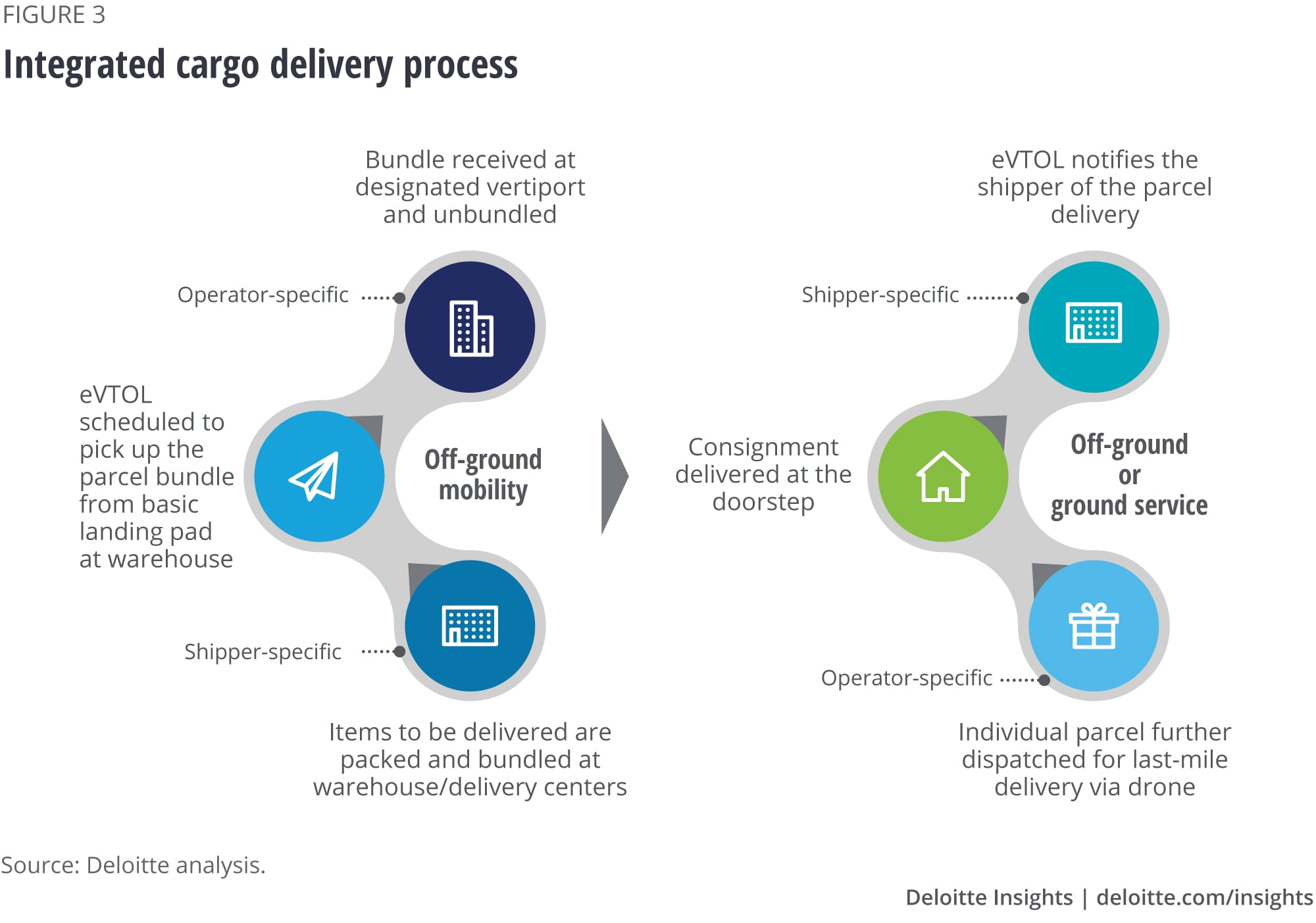
While offering an integrated transportation experience to passengers, eVTOL infrastructure will also need to provide seamless cargo delivery services. A MaaS should incorporate these cargo delivery services requirements.
Cities’ pivotal role in making UAM a reality—and a success
UAM can become a practical and widely used component of urban and suburban mobility only when eVTOLs are integrated with overall city transportation networks along with well-developed ground-based facilities and efficient air traffic management and robust communication systems.
Early operations are expected to require initial vertiport build-out—that is, leveraging the existing helipads and readily convertible rooftops of high-rise buildings, and cities will likely play a key role in creating the necessary infrastructure for UAM operation.11 Importantly, city agencies could facilitate the localization of a common concept of operations and the development of a tailored ground infrastructure plan aimed at linking residents to their desired destinations.
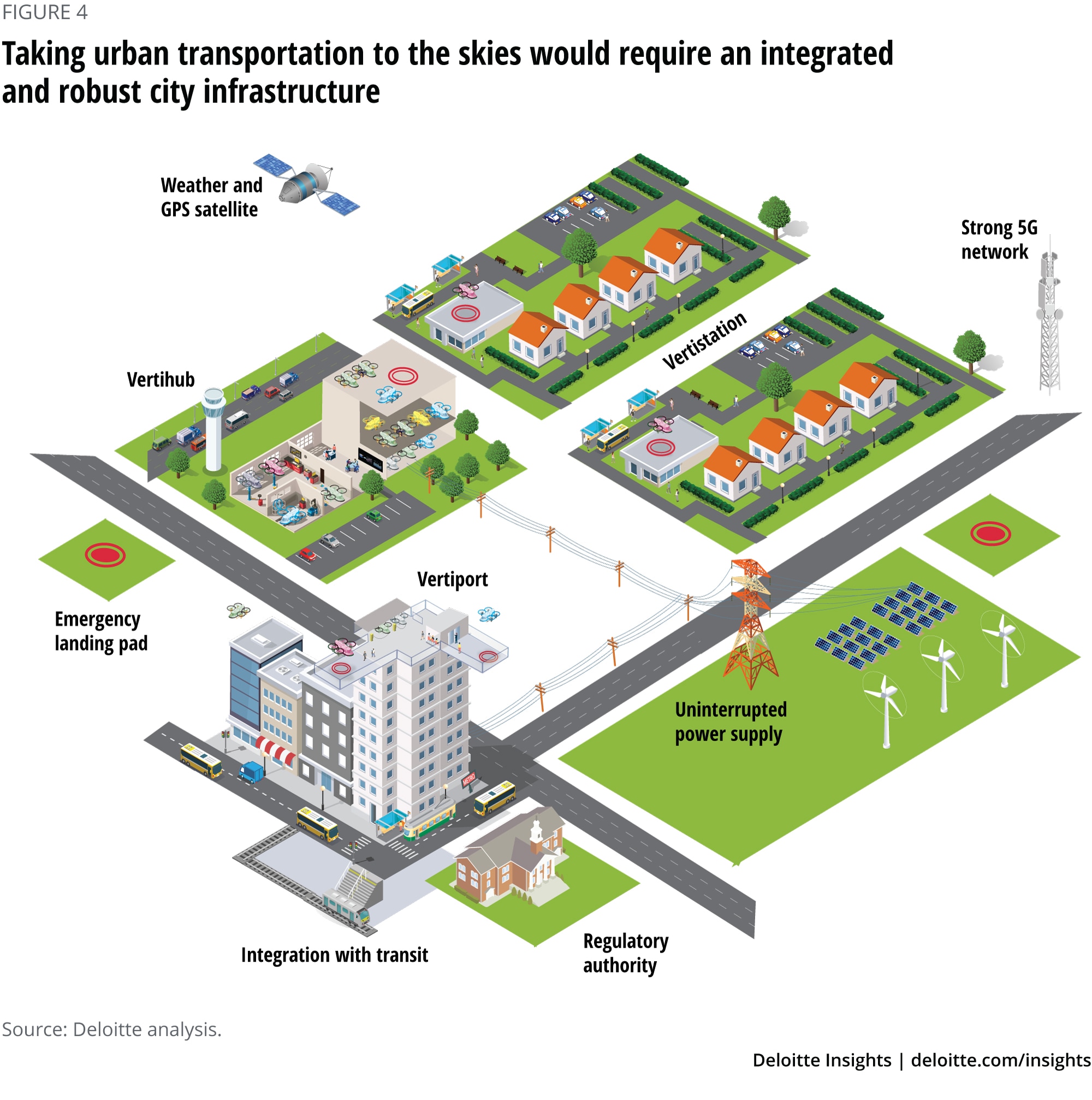
Then there’s the crucial question: Who will set up, own, and manage the ground infrastructure? Setting up a full-fledged, functional, well-integrated vertiport is a challenge, and different business models could emerge considering the key aspects of financing, cost of ownership, maintenance, and regulation.
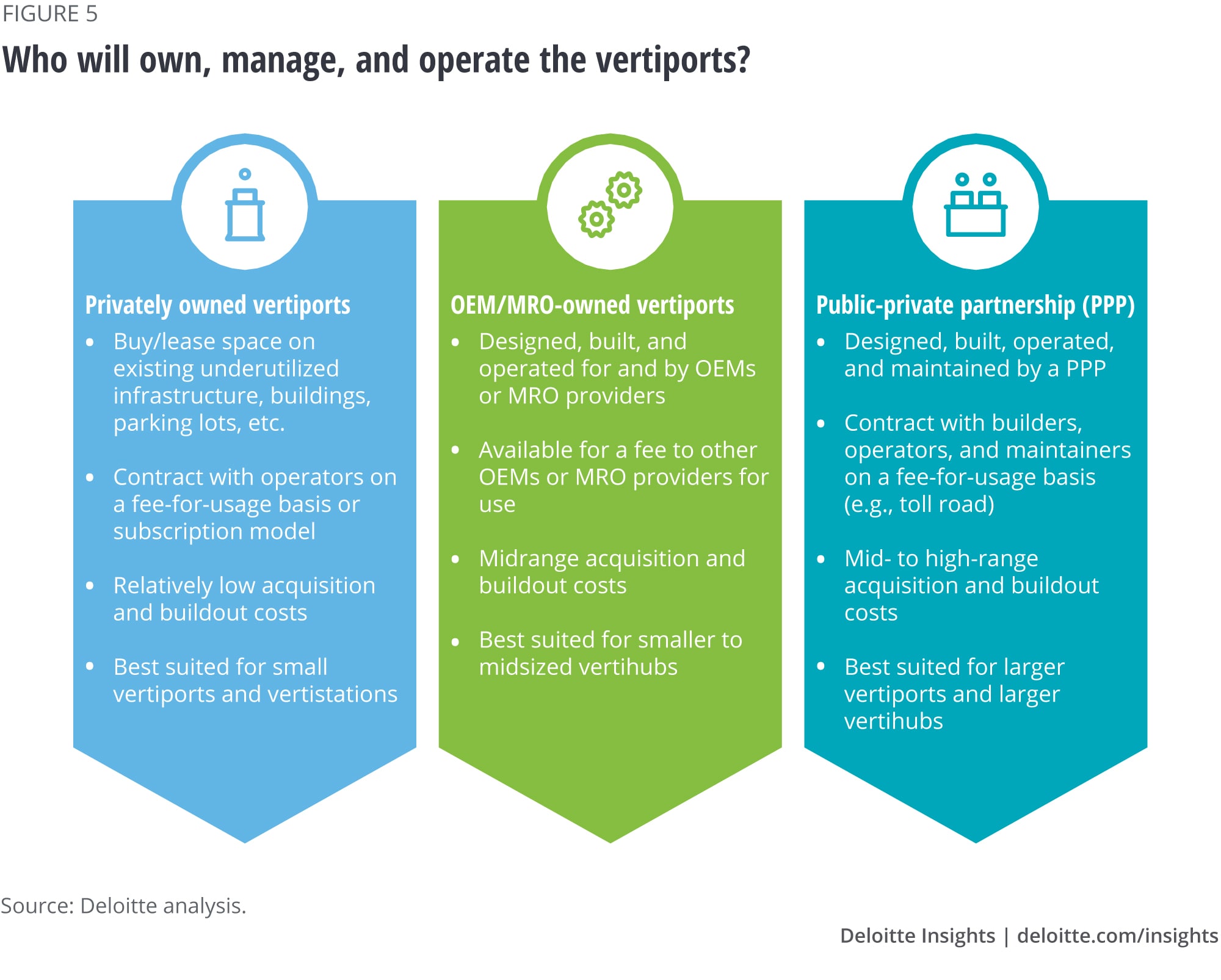
Establishing the UAM infrastructure will likely be a long-term investment requiring significant capital. It also requires that all levels of government work with the private industry to establish a clear vision of the future of UAM to help cities effectively plan and help potential investors gain the confidence to invest. And as cities work toward providing transportation to those with the most needs and the least resources, agencies should ensure that UAM be broadly accessible—that the cost per passenger approaches that for traditional mass transit. To become mainstream, the elevated mobility ecosystem needs to be far more widely available than, for instance, helicopter services for wealthy commuters.
The rooftops of London
UK startup Skyport is acquiring rooftop spaces in London that it intends to eventually convert to vertiports. The company has already bought the rights of 15 rooftops in London. Talking about Skyport’s expansion plans in August 2018, managing director Duncan Walker said, “We want to scale that up to 80 to 100 over the course of the next 18 months.” Skyport is working along with London-based architect Barr Gazetas to work on the designs for these vertiports. The ports will include facilities for recharging along with loading and unloading. Apart from London, Skyport is also starting its business in Los Angeles and Singapore.12
Conclusion: The importance of designing and building the infrastructure
Urban air mobility promises to improve the transportation of people and cargo in urban and suburban areas. But eVTOL aircraft cannot reduce transportation times and emissions and improve productivity and public safety without a robust UAM infrastructure. Indeed, infrastructure—not the flashier technology of eVTOLs themselves—is likely the biggest hurdle to overcome in establishing the scaled deployment of this new form of UAM.
The costs associated with the land/space acquisition and build-out necessitates close public-private collaboration. And alongside this effort, government and the industry will likely need to establish a common ConOps for UAM and the regulatory environment within which it can develop and operate. As importantly, new air traffic management systems should be deployed to manage the evolving skies.
More from the Future of Mobility collection
-
Forces of change: The future of mobility Article7 years ago
-
Making micromobility work for citizens, cities, and service providers Article6 years ago
-
Payments and the future of mobility Article6 years ago
-
How digital technologies can elevate car buying Article6 years ago
-
An interview with GM's Mandi Damman Article6 years ago


